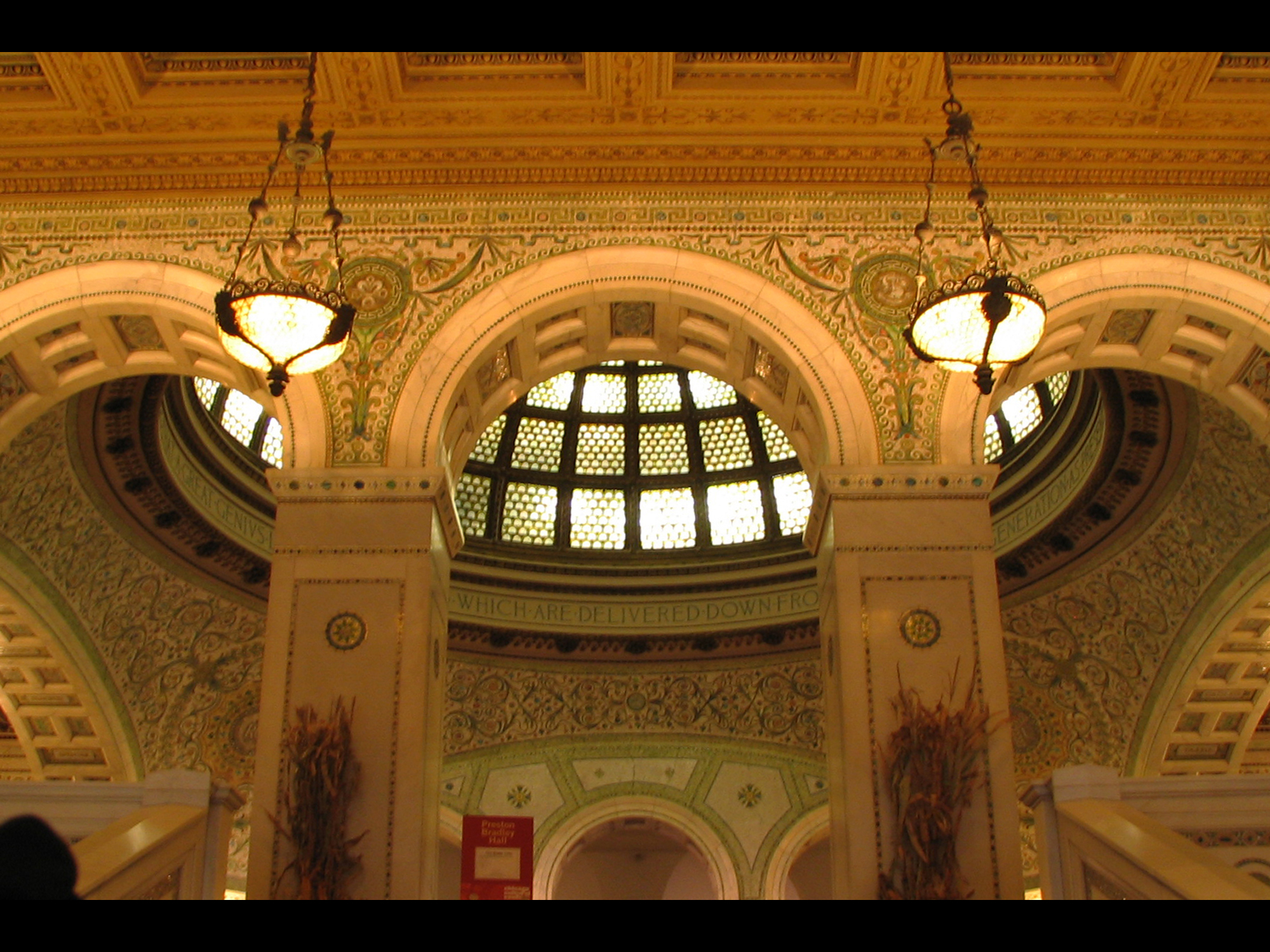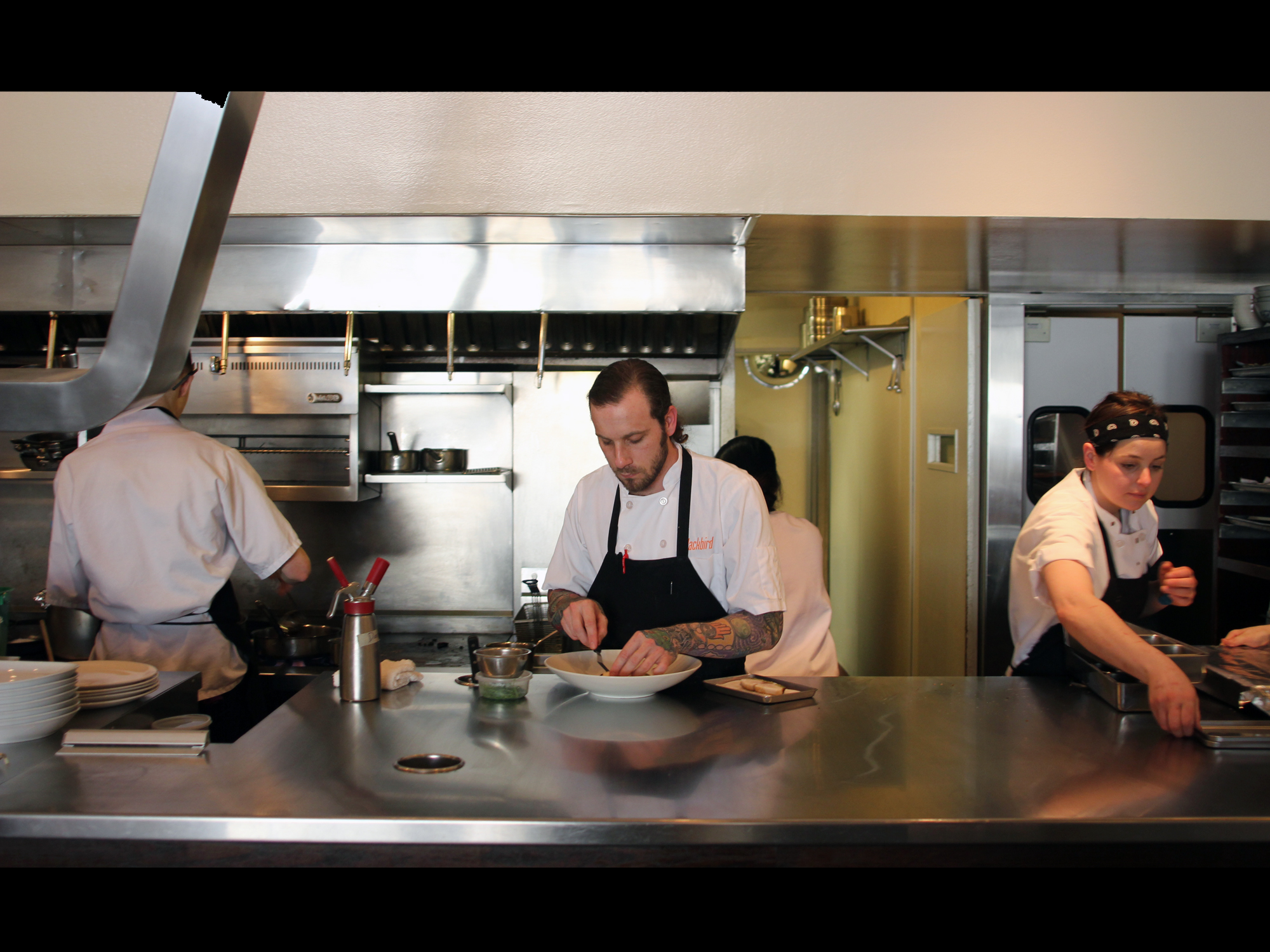“THERE ARE 189 ISLANDS IN THE MEDITERRANEAN, and roughly half of them produce wine,” Eduard Seitan says. “So if we have a dinner every other month, we can keep going for some time.”
Seitan, the longtime sommelier and wine buyer for One Off Hospitality’s restaurants, said this at a dinner last month at Avec focusing on the wines of Sardinia. As we arrived at this first in an open-ended series of island wine dinners, Seitan was working the bustling, noisy room, chatting with customers and overseeing the bar and kitchen at the same time. Fabio Pibiri, the owner of Buon Gusto, a West Town importer of goods from Sardinia, was also making the rounds; the six-course menu was a collaboration between Seitan, Pibiri and his father, and Avec chef de cuisine Perry Hendrix.
For Seitan, the island wine dinners are a natural outgrowth of his love of “weird” wines. “Wines from islands—any size islands—are unique and have so much character, partly because they tend to be made from indigenous grapes,” he says. While he’s organized wine dinners at other One Off restaurants, among them Croatian and Calabrian dinners at Publican Quality Meats, he chose Avec for this series because the restaurant concept has focused on the Mediterranean and wine from the beginning.
He started with Sardinia partly because he prefers working with small importers and distributors, and has been a Buon Gusto customer almost since Pibiri started the company a year and a half ago. The planning began with a session for the entire group to sample and discuss wines and other beverages, and to make a list of beverages that would match up with the number of courses the chef wanted to prepare. Seitan and Hendrix tasted the wines with Pibiri three times after that, and then by themselves with different Sardinian ingredients. “We also asked what they eat with a particular wine and tried to be as authentic as possible,” Seitan says, citing a wild boar ragu and pasta with a wine made from the cannonau (grenache) grape as an example of a traditional Sardinian pairing.
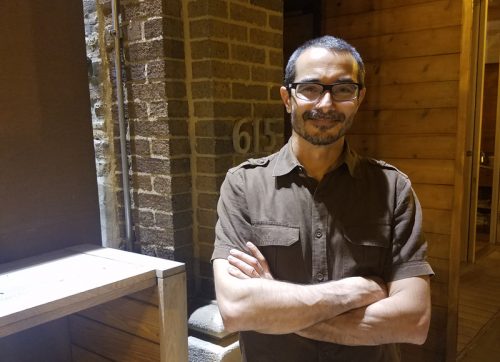 Thomas Miller
Thomas Miller Fabio Pibiri, Buon Gusto
Sitting in on a Seitan meeting with wine reps is revealing. He judges three wine competitions a year, so he’s used to tasting lots of wines in little time. He also buys from roughly 35 importers and distributors, purchasing only a small batch of one wine from some of them, which enables him to offer things other restaurants don’t. Three or four reps typically will pour six to eight wines each in a couple of hours on a Tuesday afternoon, and Seitan and a few beverage directors and/or chefs from the other restaurants for which he’s responsible will taste, discuss, and sometimes decide on the spot whether or not to buy, all with very little note-taking.
“Usually the suppliers are the ones who reach out to me,” he says. “Most of the business is done by people coming in and saying ‘I have something cool and unusual, let me show you.'”
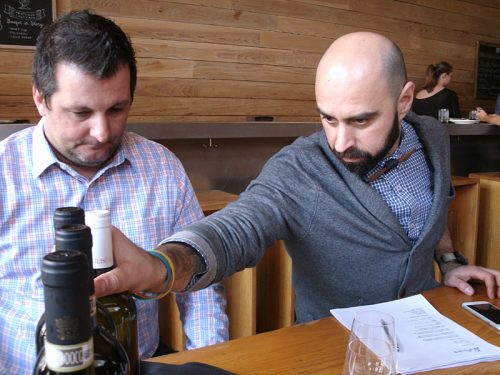 Fred Swanson
Fred Swanson Eduard Seitan at a Tuesday afternoon wine tasting
SEITAN, 43, GOT INTO WINE ALMOST by accident. A native of Bucharest, Romania, he was in his first year of law college there when he and his parents visited friends in Chicago and decided to stay. It was 1992, he was 19, and he didn’t speak any English. He worked menial construction jobs for a few months but kept hurting himself, so his parents suggested that becoming a server might be a safer profession. “I spoke Italian, so I went around to all the Italian restaurants and told them I had lots of experience, which I didn’t,” he recalls. “I’d get hired—then fired after a few days. That happened about a dozen times.”
Finally, Donny Greco and Jennifer Newbury gave him a chance as a runner at Club Lucky in Wicker Park. He worked his way up to server in a couple of months and stayed for four years, learning English on the job. There he met bartender Rick Diarmit, who one day said that he and a buddy were going to open a restaurant and needed help and cash. Seitan put up all the cash he had—about $40,000—and borrowed all the money his parents had saved. Besides Diarmit, the partners were Paul Kahan and Donnie Madia. “When my father saw the building, he said ‘Oh my God, I will never see my money back,’” Seitan says. Blackbird opened at the end of 1997 and paid him back within a few years.
One day, I looked at my notes and realized I’d tasted 1,800 wines in a year. I learned mostly by trial and error.
Diarmit was the original wine buyer at Blackbird, but Seitan says he started taking wine seriously by doing tastings with the partners, who all knew more than he did. “When we decided to open Avec, Rick got very involved in the build-out, so I did the buying for Blackbird for a year and was also developing the list for Avec,” he says. “One day, I looked at my notes and realized I’d tasted 1,800 wines in a year. I learned mostly by trial and error, though I did take some classes from the late Pat Fegan and the introductory sommelier exam in 2006.”
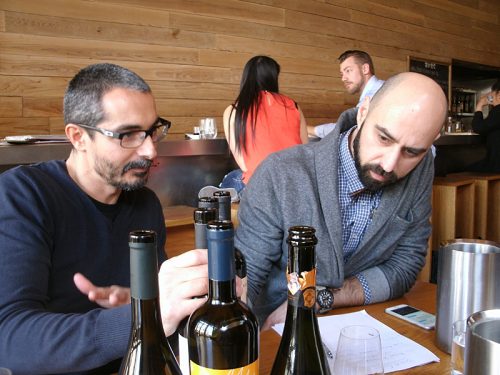 Fred Swanson
Fred Swanson When Avec opened in October 2003, the list focused on the sunny Mediterranean: southern France, southern Italy, Spain, and Portugal. But recently Seitan has been augmenting the repertoire with wines from Greece and Morocco, as well as specials from Turkey, though they’re hard to come by and sell out right away. He’s also thinking of adding Israeli, Algerian, and Lebanese wines, as long as he can find reliable distributors. “I appreciate the flavor profile of younger wines more than older,” he admits. “I think wine buyers and drinkers sometimes take it too seriously. It’s a beautiful beverage but a beverage like any other, and I find it pretentious to spend a huge amount on a very old bottle of wine that may be terrible when you open it. When I shop for myself, I’m a cheapskate. I look for value and wines from new and interesting places.”
The spirit of experimentation extends to some of the other restaurants. For its first three years, The Publican offered wines only from the southern hemisphere, but they didn’t mesh all that well with the food, so now the selection is moving more toward Northern Europe and the Balkans. Publican Quality Meats has a small number of rustic French, Germanic, and Balkan wines, available mostly by the glass. Similar wines are on the retail shelves, along with some domestic wines. Seitan says he’s very excited about wines from McPherson Cellars in Lubbock that he’s offering there and at Big Star. He’s also a big fan of Midwestern wines, such as the chambourcin and cabernet franc from August Hill Winery in Utica, Illinois, and the premium line Lynn Aleksandr Cabernet Sauvignon from Cherry Creek Winery in Brooklyn, Michigan.
A story about that cabernet, also a hit with the Obamas and Oprah Winfrey when they shared a bottle of the 2002 vintage (now gone) in 2008, epitomizes Seitan’s can-do attitude about wine and food. He’s a licensed pilot and owns a four-seat plane, so when Cherry Creek’s John Burtka—a winemaker at our table for the Sardinian dinner—requested 700 of Avec’s chorizo-stuffed medjool dates wrapped in bacon for a dinner at the winery, he loaded up the plane, duct-taping two buckets of the piquillo pepper-tomato sauce to the back seat. Burtka met him at the Hillsdale, Michigan airport, paid for the dates, threw in a few cases of the Lynn Aleksandr, and Seitan flew home—both sides happy with their trade.
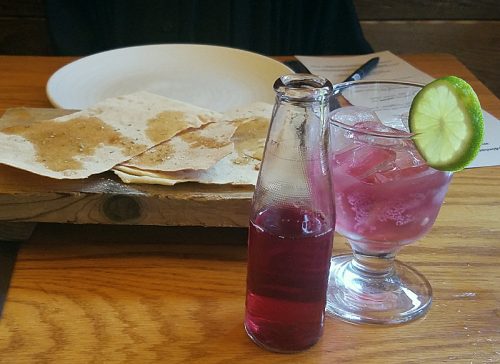 Thomas Miller
Thomas Miller Distillerie Lussurghesi “Eya!” Santu Lussurgiu, with flatbread
OUR SARDINIAN MEAL BEGAN WITH Distillerie Lussurgesi “Eya!” Santu Lussurgiu, a jewel-toned magenta aperitif made from myrtle. It came in an impossibly cute little bottle and was poured into an ice-filled glass garnished with a slice of lime. A little bitter, a little sweet, and kind of floral, it was very refreshing, served with crisp paper-thin Sardinian flatbread lightly sprinkled with wild herb salt and olive oil.
The second course, steamed clams in white wine with fregola sarda pasta and shaved bottarga, featured pleasantly chewy irregular spheres of toasted durum-wheat-semolina pasta that were vaguely reminiscent of Israeli couscous. Dotted with succulent little clams in the shell and accented by shaved Sardinian bottarga, the flavorful dish was perfectly matched with Cantina Il Nuraghe “Ago,” Mogoro, a crisply dry yet fruity white wine.
Next up: a crisp-skinned fillet of branzino draped over warmed, marinated black and green olives and topped with a little salad of shaved fennel and wild arugula. It was accompanied, improbably, by a Sardinian beer, Birrificio la Volpe e Il Luppolo “Torragghettai” Simaxis, made by a friend of Pibiri. Not being a big beer drinker, I didn’t know what to expect, but the pale, relatively light brew was excellent with the fish and a surprise of the evening.
Malloredus pasta with wild boar ragu may have been my favorite. Also known as Sardinian gnocchi, the striped, shell-shaped pasta was coated with a piquant tomato-based ragu and finished with shaved year-old artisanal Sardinian pecorino. Cantina di Oliena “Nepente,” a full-bodied yet relatively soft red made 100 percent from the native grape cannonau, was as complementary as can be.
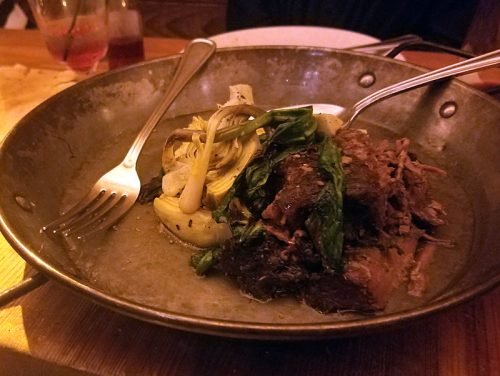 Thomas Miller
Thomas Miller Lamb shoulder with artichokes and ramps
The final savory course, served in a paella pan, was slow-roasted lamb shoulder with Sardinian artichokes and wild onion, though for the latter chef Hendrix used ramps, because they were in season. The very gently brined artichoke sections, still cool, undercut the richness of the meat nicely. Cantina Binzamanna “Spanu,” Martis, a robust ruby-red wine made from cagnulari and bovale grapes grown in the Sardinian hills for centuries, paired well, though I preferred the Nepente.
For dessert, we had seadas, a traditional Sardinian fritter stuffed with percorino cheese, flavored with orange zest, and drizzled with wildflower honey. With its fluted edges, the circular pastry reminded me of a sunburst. A glass of Cantina Lussurgesi “Mirto Judu,” a Sardinian liqueur made from the same myrtle berries as the aperitif, completed the memorable meal by bringing us full circle—as Mediterranean island journeys often do.
In any case, Seitan was happy with the result. “I left about 12:30, after midnight,” he says later. “And there was a group of about ten Sardinians in the corner, and they were all singing Sardinian songs. It was a great night.”
Avec’s next island wine dinner will focus on Sicily and will take place this Thursday, June 16. Information about the dinners is available at the Avec website, and reservations can be made at 312-377-2002.
Anne Spiselman is a freelance writer who has covered food, wine, and culture for decades. She’s a frequent contributor to Crain’s Chicago Business and Edible Chicago and has written for most local publications and some national ones.
Disclosure: the author attended the dinner as a guest of Buon Gusto.
Latest
Join the Discussion
After you comment, click Post. If you're not already logged in you will be asked to log in or register with Disqus.





